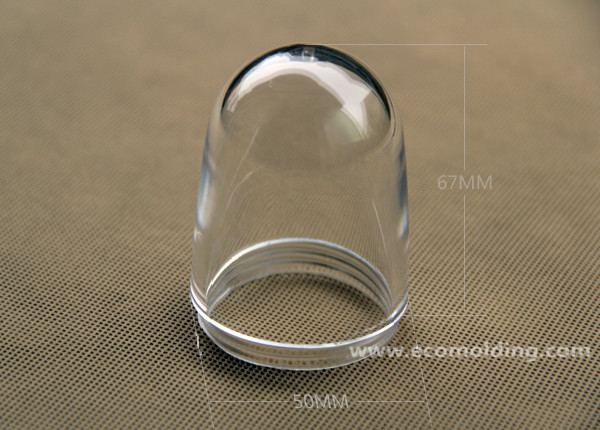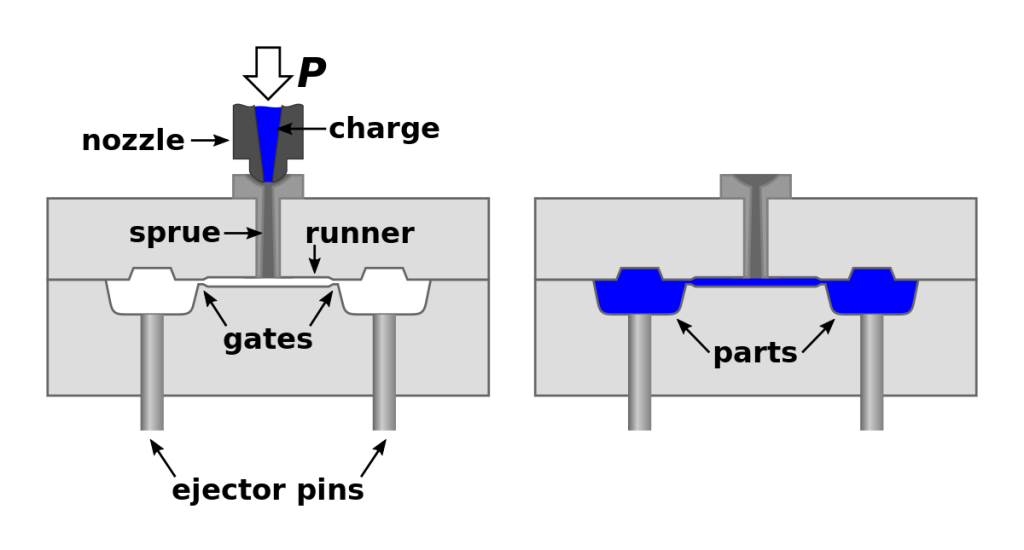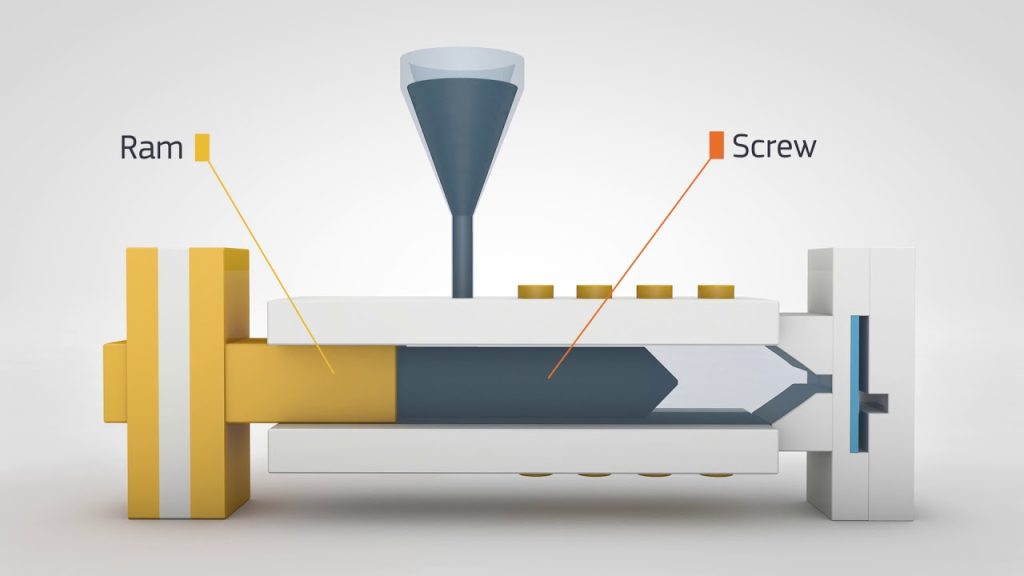Table of Contents
Polycarbonate is a widely used thermoplastic material that has remarkable properties such as high impact resistance, excellent heat resistance, and optical clarity. But, can it be injection molded? Injection molding is a popular manufacturing process that involves injecting molten material into a mold to create a desired shape. In this article, we will explore whether polycarbonate can be injection molded and what factors affect the process.
Injection molding has revolutionized the process of manufacturing plastics. It offers numerous benefits such as high production rates, complex part geometries, and cost-effectiveness. But, is polycarbonate compatible with this process? In this article, we will delve into the properties of polycarbonate and the injection molding process to determine whether it’s possible to injection mold polycarbonate successfully.
Yes, polycarbonate can be injection molded. Injection molding is a popular manufacturing technique used to produce high-quality, accurate, and complex parts in large volumes. Polycarbonate is a thermoplastic material that can be easily molded using this process. The material is melted and injected into a mold, where it cools and solidifies into the desired shape. Polycarbonate injection molding is widely used in the automotive, electronics, and medical industries, among others.
Can Polycarbonate Be Injection Molded?
If you’re looking for a reliable and versatile plastic for your manufacturing needs, polycarbonate might just be the perfect material for you. But can polycarbonate be injection molded? The answer is yes! In fact, polycarbonate is a popular choice for injection molding due to its unique properties and ability to produce high-quality parts with excellent precision and consistency.
What is Polycarbonate?
Polycarbonate is a thermoplastic polymer that is known for its strength, durability, and clarity. It is commonly used in a variety of industries, including automotive, aerospace, and electronics, due to its excellent mechanical and thermal properties. Polycarbonate is also lightweight, making it an ideal choice for applications where weight is a concern.
Polycarbonate is often compared to acrylic due to its clarity and transparency, but it is much stronger and more impact-resistant than acrylic. It is also resistant to high temperatures, making it suitable for use in applications where heat resistance is important.
What is Injection Molding?
Injection molding is a manufacturing process that involves injecting molten material into a mold to create a part or product. This process is commonly used in the production of plastic parts, as it allows for high-volume production of complex parts with excellent precision and accuracy.
In injection molding, the polycarbonate material is heated to its melting point and then injected into a mold under high pressure. The material then cools and solidifies, taking on the shape of the mold. This process can be repeated thousands of times, making it a cost-effective and efficient way to produce high-quality parts.
Benefits of Injection Molding with Polycarbonate
There are many benefits to using polycarbonate for injection molding. Some of the key advantages include:
- High strength and durability
- Excellent impact resistance
- Transparency and clarity
- Resistance to high temperatures
- Ability to produce complex parts with precision and accuracy
- Cost-effective and efficient production process
Polycarbonate vs Other Plastics
When compared to other plastics, polycarbonate stands out for its strength, durability, and clarity. Some of the key differences between polycarbonate and other plastics include:
| Polycarbonate | Acrylic | Nylon |
|---|---|---|
| High strength and durability | Less impact-resistant | Less transparent |
| Excellent impact resistance | More brittle | Less heat-resistant |
| Transparency and clarity | Less durable | Less chemical-resistant |
Applications of Polycarbonate Injection Molding
Polycarbonate injection molding is used in a wide range of industries and applications. Some of the most common uses of polycarbonate parts include:
- Automotive parts such as bumpers, fenders, and interior trim
- Aerospace parts such as cockpit canopies and aircraft windows
- Electronics parts such as computer housings and LCD screens
- Medical equipment parts such as syringes and IV components
- Sporting goods parts such as helmets, goggles, and protective gear
Conclusion
In conclusion, polycarbonate can be injection molded and is a popular choice for manufacturing due to its strength, durability, and clarity. Its ability to produce high-quality parts with precision and accuracy makes it an ideal choice for a wide range of industries and applications. If you’re looking for a reliable and versatile plastic for your manufacturing needs, polycarbonate may be just what you need.
Frequently Asked Questions
Polycarbonate is a popular thermoplastic material that is widely used in various industries due to its excellent properties. One of the most common ways to manufacture polycarbonate parts is through injection molding. In this section, we will answer some of the frequently asked questions about polycarbonate injection molding.
Can polycarbonate be injection molded?
Yes, polycarbonate can be injection molded. In fact, injection molding is one of the most common methods used to manufacture polycarbonate products. This process involves heating the polycarbonate resin to its melting point and then injecting it into a mold cavity. The mold is then cooled and the part is ejected.
Injection molding is a highly efficient and cost-effective method for producing large volumes of high-quality polycarbonate parts. It offers excellent dimensional accuracy, consistency, and repeatability. Additionally, polycarbonate injection molding allows for the production of complex parts with intricate geometries that cannot be easily produced by other methods.
What are the advantages of polycarbonate injection molding?
Polycarbonate injection molding offers several advantages over other manufacturing methods. Firstly, it allows for the production of high-quality parts with excellent dimensional accuracy, consistency, and repeatability. Secondly, it is a highly efficient and cost-effective method for producing large volumes of parts. Thirdly, it allows for the production of complex parts with intricate geometries that cannot be easily produced by other methods. Lastly, polycarbonate injection molding offers a wide range of design flexibility, allowing for the creation of custom parts that meet specific application requirements.
Overall, polycarbonate injection molding is a versatile and reliable manufacturing method that offers numerous advantages over other methods. It is widely used in various industries, including automotive, medical, electronics, and consumer goods, among others.
What are the challenges of polycarbonate injection molding?
Polycarbonate injection molding does come with its own set of challenges. Firstly, the material can be difficult to process due to its high viscosity and low melt flow index. This can lead to issues such as flow marks, weld lines, and sink marks. Secondly, polycarbonate is sensitive to moisture and must be properly dried before processing to avoid defects such as bubbles and voids. Lastly, the material is prone to stress cracking and must be handled carefully to avoid damage during processing and use.
To overcome these challenges, it is important to work with an experienced and knowledgeable injection molding supplier who understands the properties of polycarbonate and knows how to optimize the process for best results.
What are the applications of polycarbonate injection molding?
Polycarbonate injection molding has a wide range of applications across various industries. Some common applications include automotive parts such as headlight lenses and interior trim components, medical devices such as syringes and IV connectors, consumer goods such as electronic housings and kitchen appliances, and industrial components such as gears and bearings. Additionally, polycarbonate injection molding is used in applications that require high impact resistance, optical clarity, and flame retardancy.
Overall, polycarbonate injection molding is a versatile and reliable manufacturing method that offers numerous advantages over other methods. It is widely used in various industries, and its applications continue to grow as new grades and formulations of polycarbonate become available.
In conclusion, polycarbonate is a thermoplastic material that is widely used in various industries due to its exceptional properties such as high impact resistance, optical clarity, and heat resistance. One of the most common manufacturing processes used to produce polycarbonate parts is injection molding.
Injection molding is a highly efficient process that involves the melting of the polycarbonate pellets and injecting them into a mold cavity to form a desired shape. With the right equipment and process parameters, polycarbonate can be injection molded with ease, resulting in high-quality parts.
Overall, injection molding is an excellent choice for producing polycarbonate parts for various applications. It offers several advantages such as high production efficiency, low cost per part, and excellent part quality. Therefore, if you are looking for a reliable and cost-effective method to produce polycarbonate parts, injection molding is worth considering.
Request a quote today!
[contact-form-7 id="1578" title="Contact form"]
Please compress the file into a ZIP or RAR file before uploading. Alternatively, send through your RFQ by email.
enquires@unitymanufacture.com





